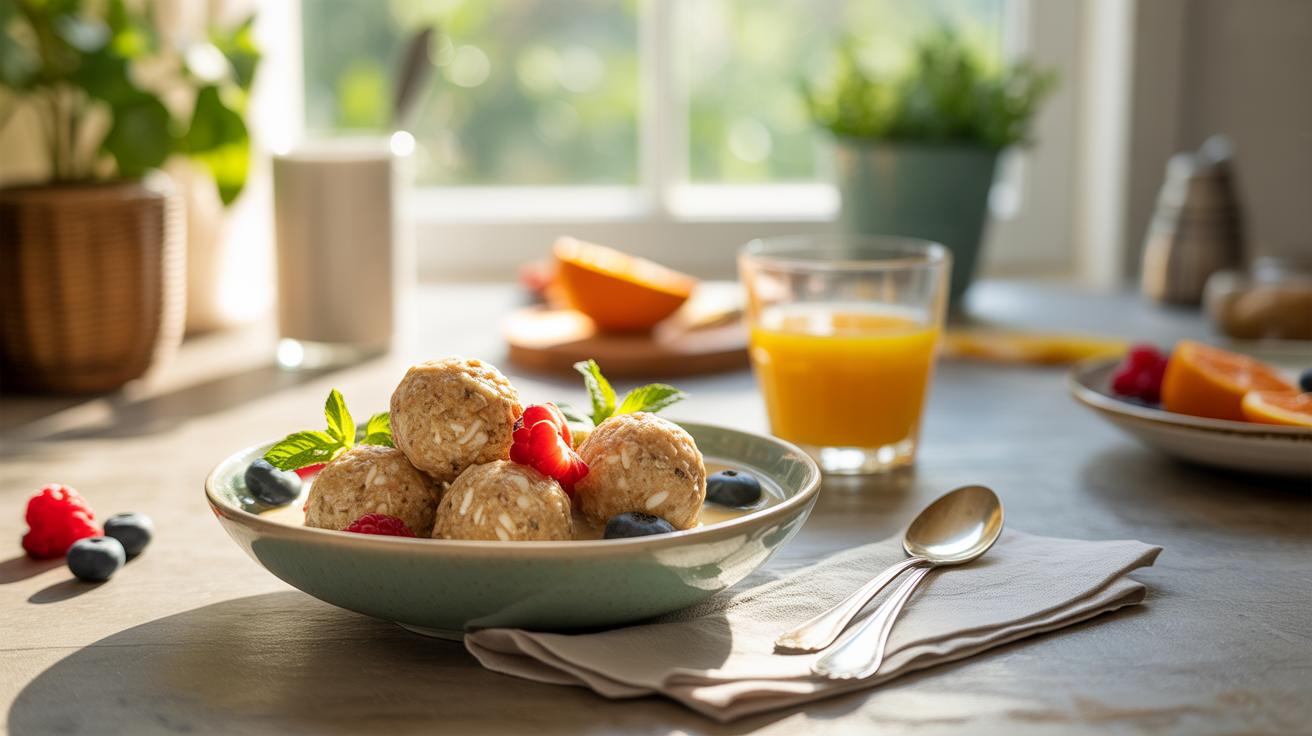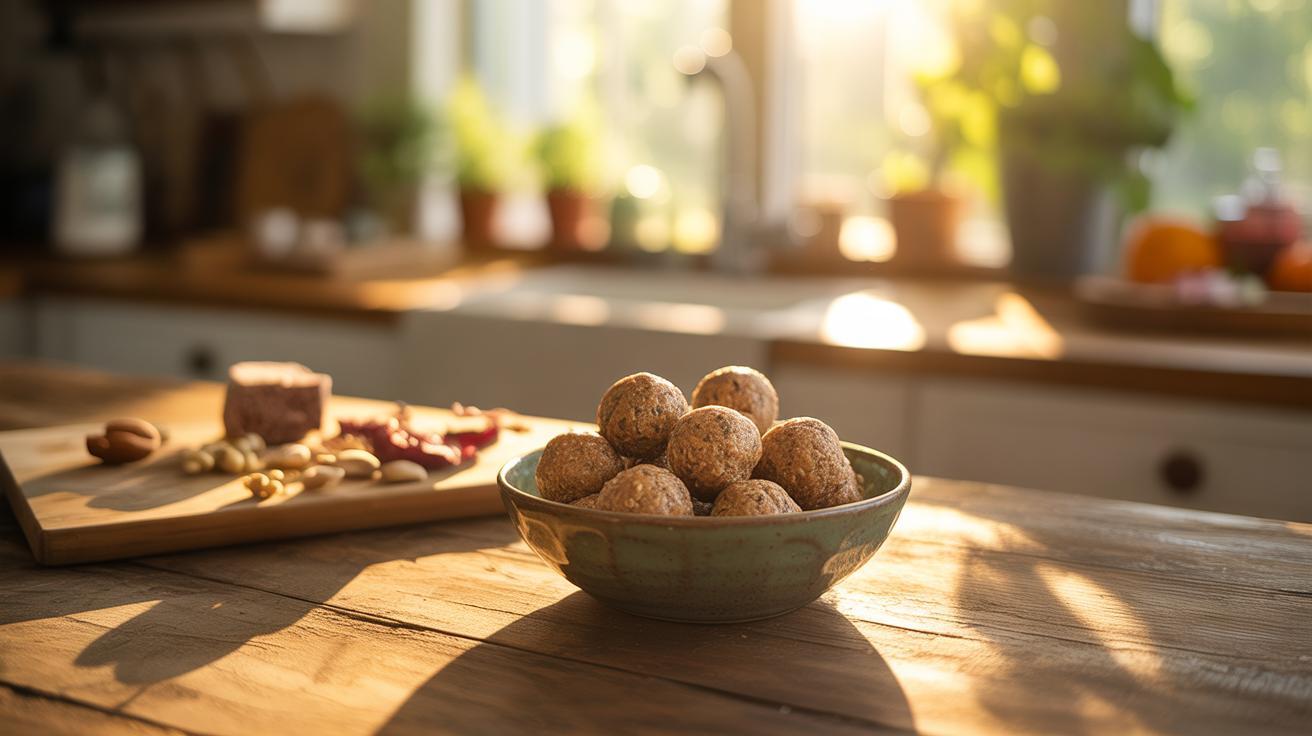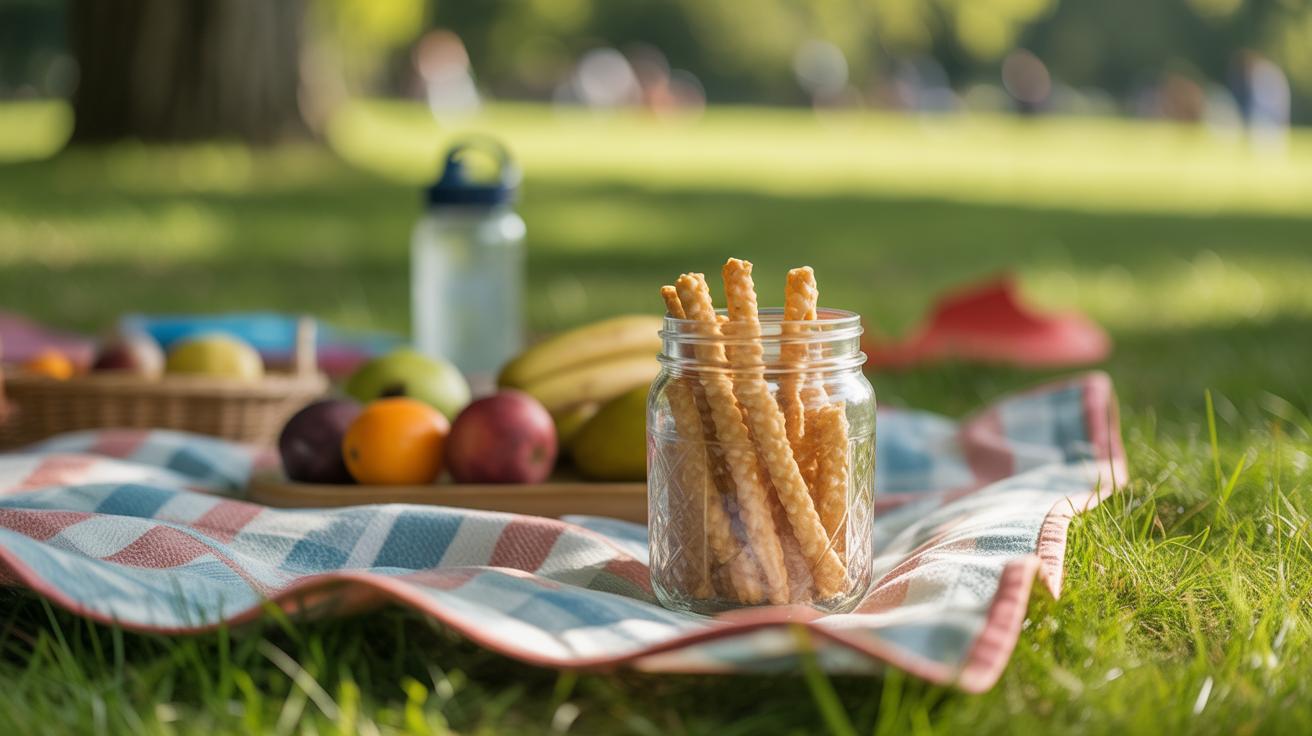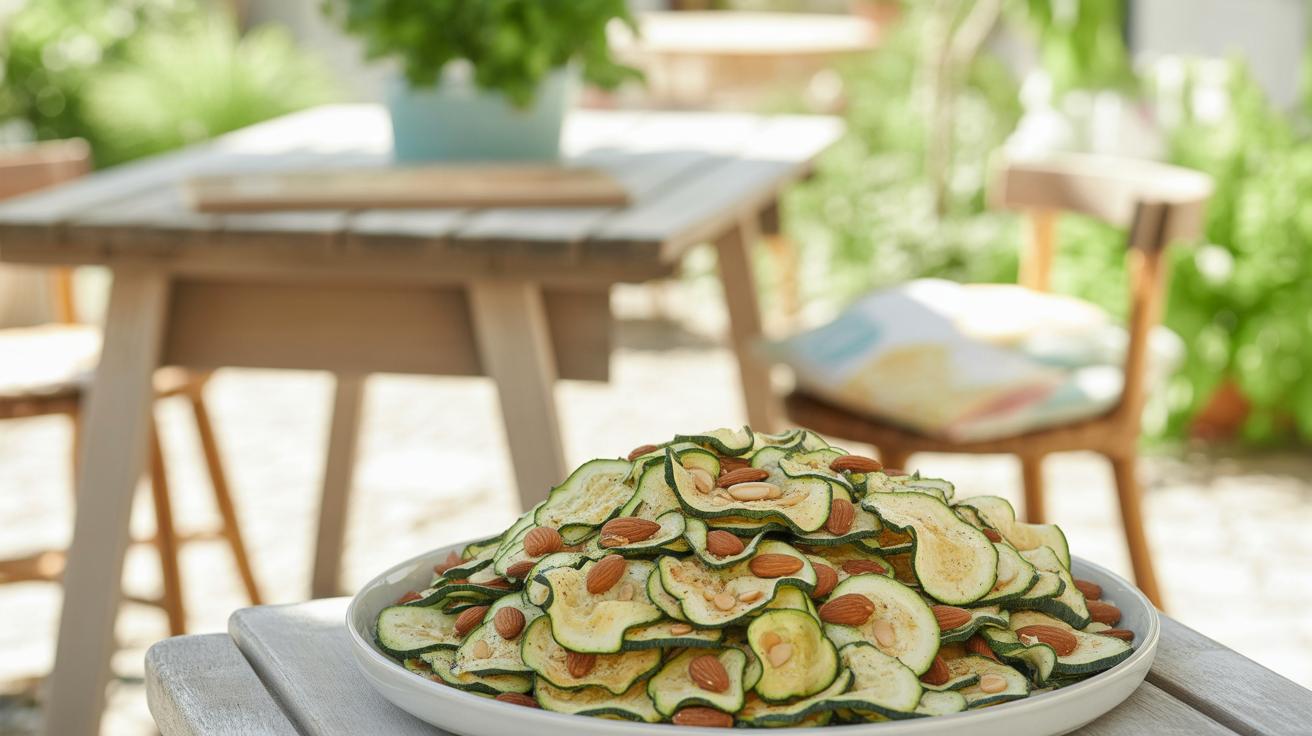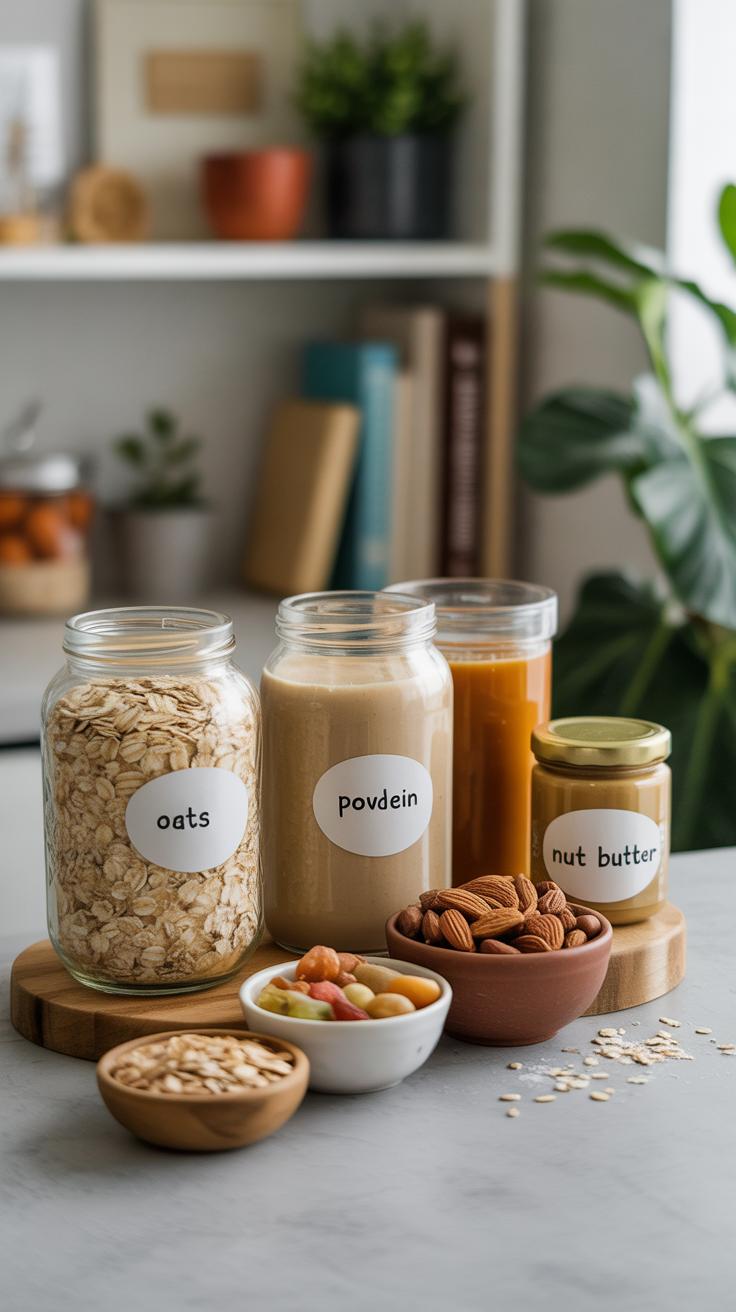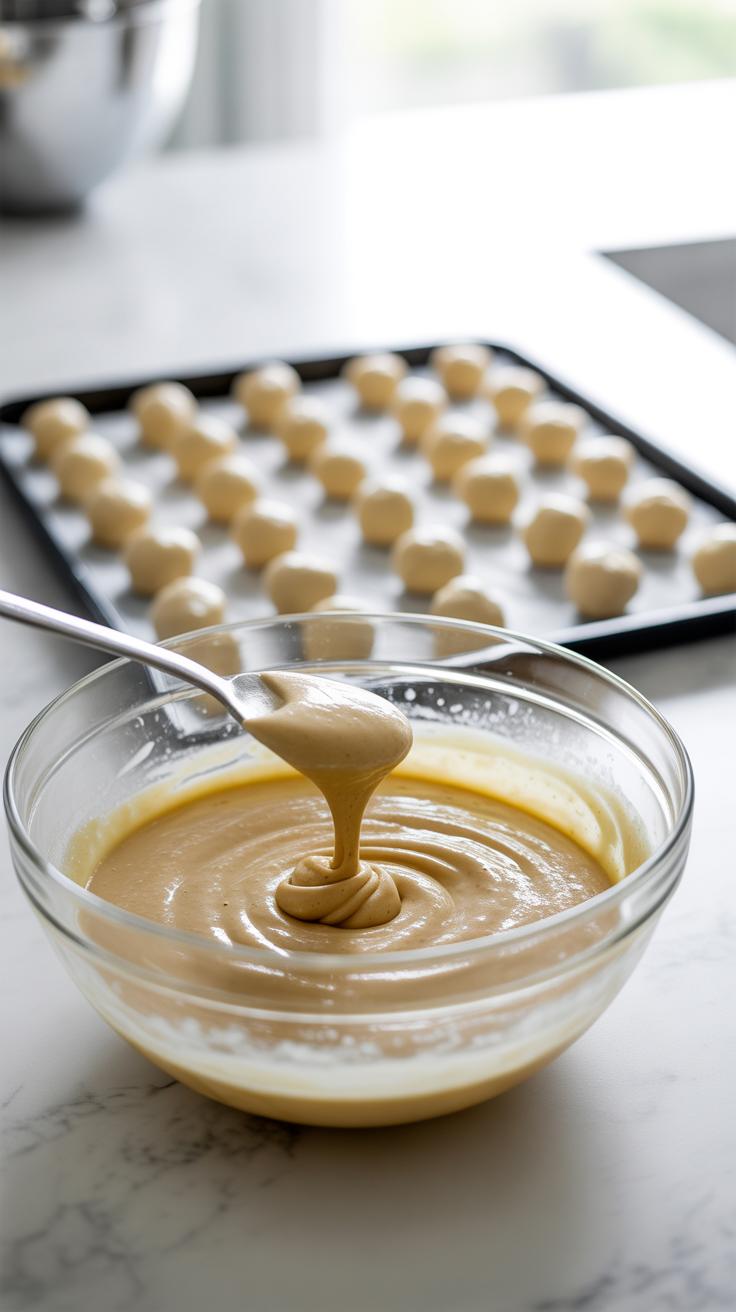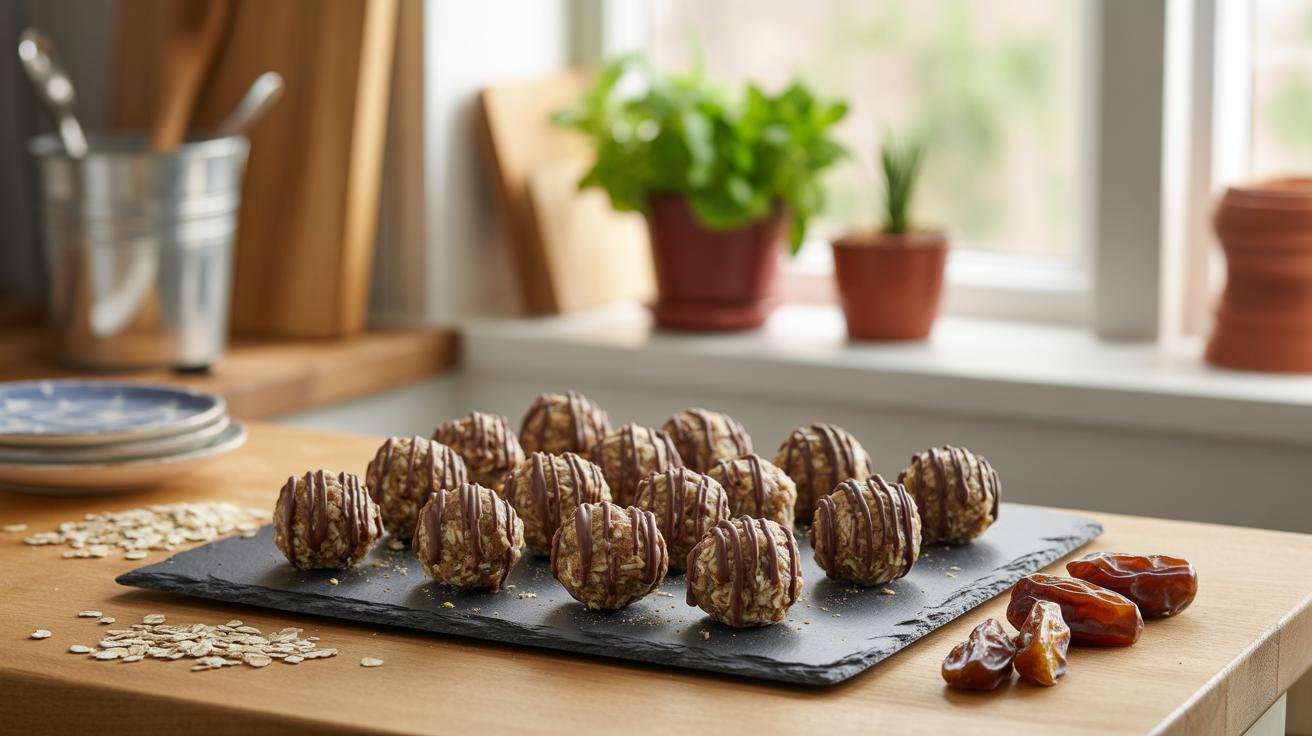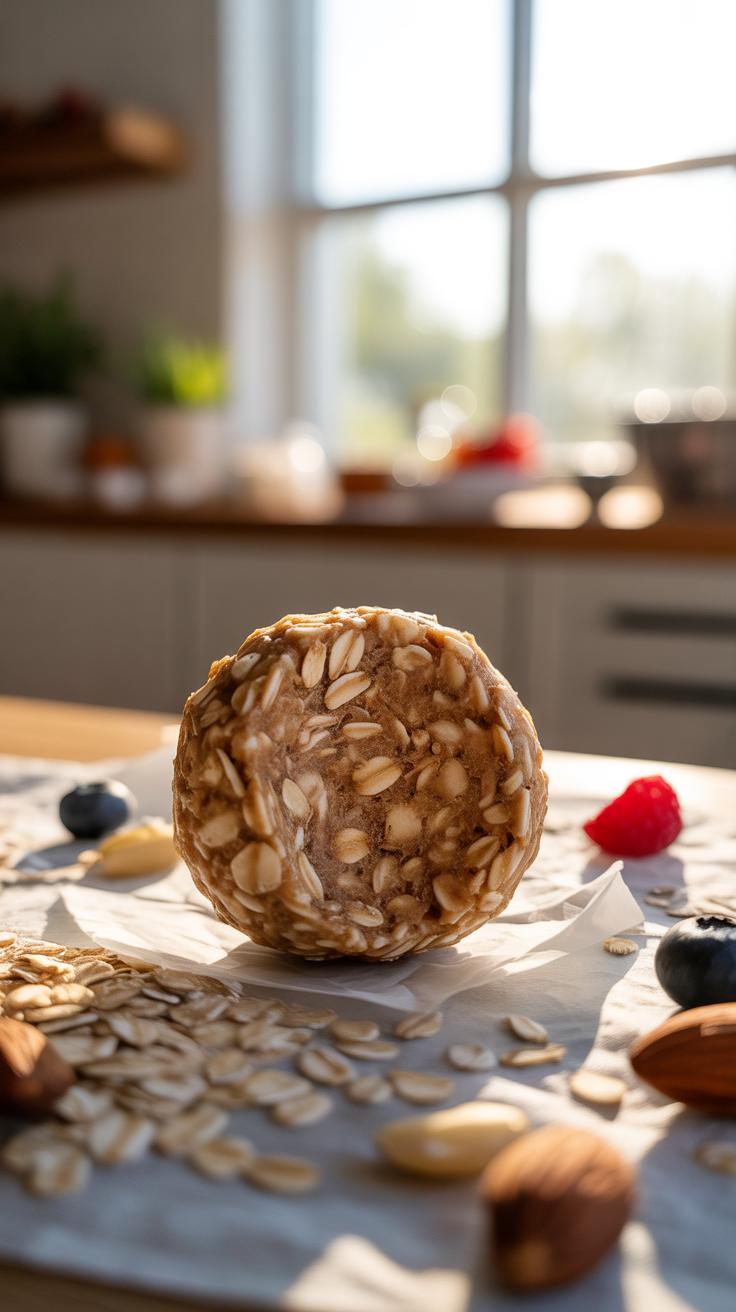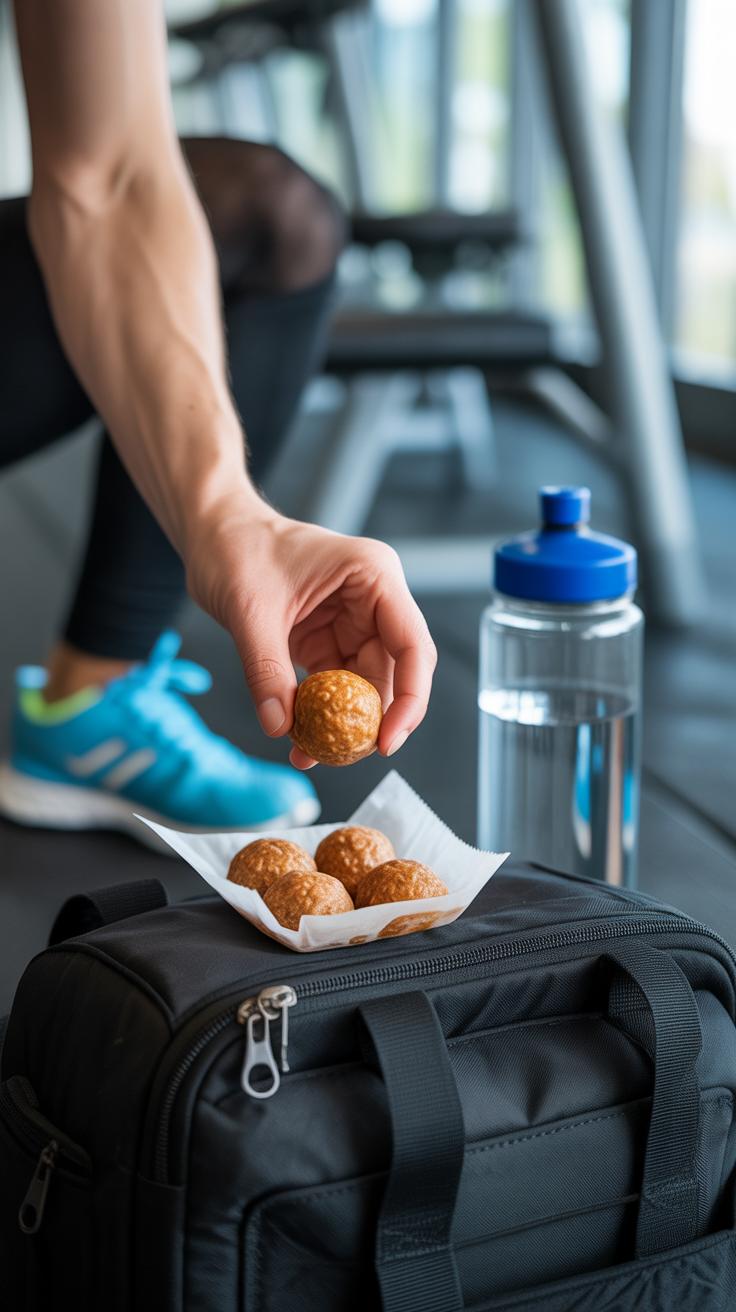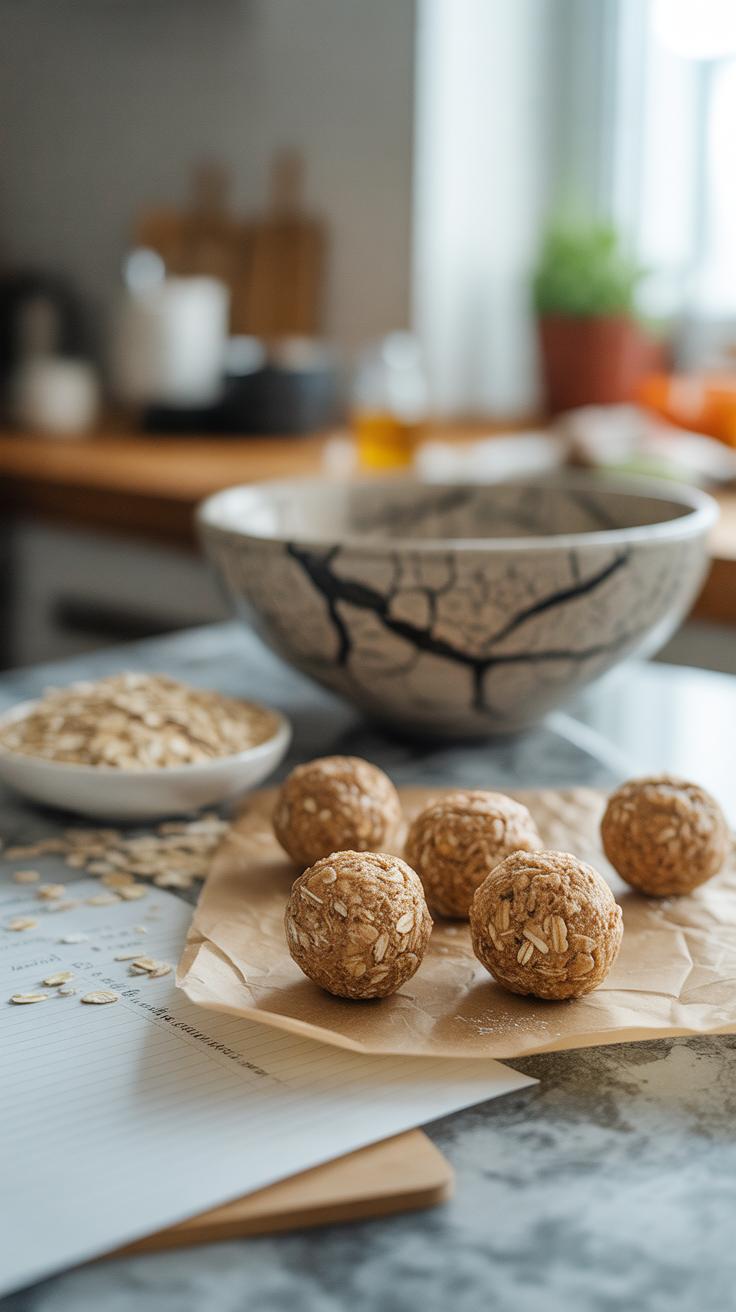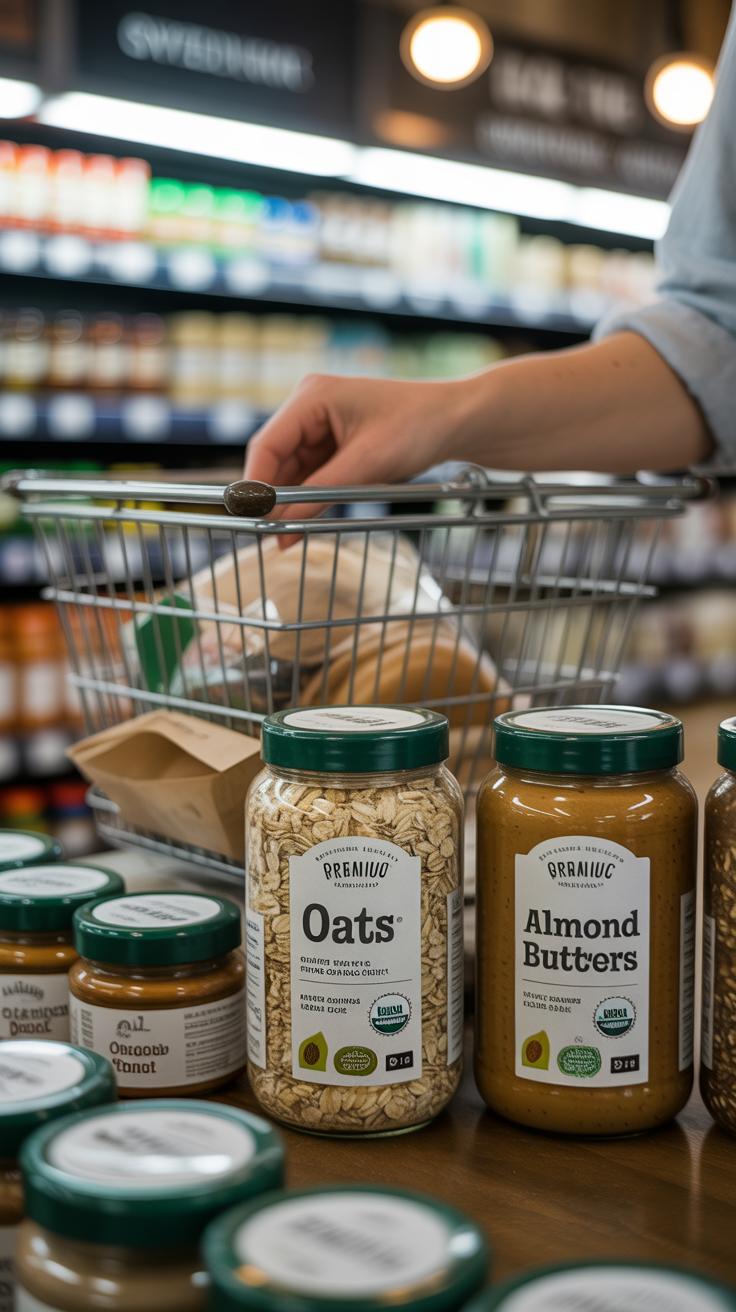Introduction
Nutritious oatmeal protein balls offer a quick and easy way to power your mornings. Combining the natural goodness of oats with the strength-building qualities of protein, these balls make a tasty and satisfying breakfast option. They are easy to prepare and perfect for busy days when you need energy regardless of time.
This article explores why oatmeal and protein make a great duo for starting your day right. It will discuss the nutritional benefits, simple recipes, and practical tips to incorporate these balls into your morning routine. You’ll discover how these small snacks can keep you full and focused until your next meal.
Understanding Oatmeal And Its Nutrition
What is oatmeal? At its core, oatmeal comes from whole oat groats—basically the oat grain itself, minus the outer hull. These groats get processed into different forms that vary in texture and cooking time. You have rolled oats, which are steamed and flattened; steel-cut oats, chopped into coarse pieces; and instant oats, which are pre-cooked and dried for quick preparation.
Each type offers a slightly different experience when you eat or cook it. Rolled oats strike a balance—soft but still chewy. Steel-cut oats feel nutty and dense. Instant oats, not surprisingly, have the softest texture since they cook so quickly.
When it comes to nutrients, oatmeal stands out for its fiber content, especially soluble fiber like beta-glucan, which can help regulate blood sugar and cholesterol. Minerals like manganese, phosphorus, magnesium, and iron are present too—small yet meaningful amounts that support various body functions. It’s not just carbs; oats pack a nutritional punch that’s often underestimated.
Types Of Oatmeal Used For Protein Balls
For oatmeal protein balls, the choice of oatmeal can affect everything from texture to how the mixture holds together. Rolled oats are the usual pick—they’re sturdy enough to add bite but soft enough to blend well with binders like nut butter or honey. Steel-cut oats, while tasty, are generally too hard unless pre-cooked or finely ground, which most people skip for convenience.
Instant oats can work, especially if you want a smoother, more uniform texture. But there’s a tradeoff: they can make the balls a bit mushy or less textured, which might not be all that satisfying.
Ultimately, rolled oats usually hit the sweet spot, lending enough chewiness without overwhelming the protein ball’s structure. You might experiment a bit—grinding rolled oats in a food processor can mimic flour for a finer crumb, while leaving them whole gives a bit of crunch.
Nutritional Benefits Of Oatmeal
Oatmeal provides more than just energy. Its fiber content, especially beta-glucan, plays a role in digestive health and helps keep you feeling full longer—handy for staying focused through a busy morning.
Oats carry several minerals that quietly work behind the scenes: manganese supports bone development and metabolism; magnesium is key for muscle and nerve function; phosphorus helps with energy production, and iron transports oxygen in the blood.
There’s also protein—though modest in quantity—offering building blocks your body needs, especially when combined with other ingredients like nuts or protein powders in those oatmeal balls. Eating oatmeal in the morning can aid blood sugar control, so you don’t hit that mid-morning energy crash some people dread. Frankly, whether you’re rushing or savoring breakfast, oats offer a solid nutritional base.
The Role Of Protein In Your Breakfast
Protein plays a key role in your body, especially after a night of fasting when you wake up. Your muscles need repair and recovery from daily wear, even if you haven’t worked out recently. Eating protein in the morning jumpstarts this process, helping maintain muscle mass and supporting overall body functions.
But it’s not just about muscle. Protein impacts your energy levels too. Unlike simple carbs that give quick bursts of energy that fizzle out fast, protein provides a steadier fuel source. It slows down digestion, helping keep hunger at bay for longer. That can make a big difference if you often feel shaky or distracted mid-morning.
Still, it’s curious how many people overlook protein come breakfast time. Maybe it’s easier to grab cereal or toast, rather than think about balance. Yet, without enough protein early, energy can dip and concentration drop—you might notice this if you skip it, or rely on sugary morning snacks.
Protein Types Suitable For Oatmeal Balls
When it comes to oatmeal protein balls, choosing the right protein matters—not all proteins behave the same or taste identical.
- Whey protein: This common dairy-based protein absorbs quickly and mixes well. It adds a creamy texture and usually a mild dairy flavor, which some people find comforting but others don’t.
- Plant-based proteins: Options like pea, hemp, or brown rice protein appeal if you’re avoiding animal products. They vary in texture—some are gritty, others smoother—and bring subtle, earthy notes.
- Nuts and seeds: Not just toppings, nuts like almonds or seeds such as chia add protein with healthy fats and crunch. Their whole-food nature means they also bring fiber and minerals.
Mixing different protein sources can help balance taste and texture. For example, whey blends smoothly, but adding nut butter provides richness and chew. You might experiment a bit to find what suits your palate and dietary needs.
How Protein Supports Your Energy Levels
Protein helps sustain you through the morning, but why exactly? For starters, protein takes longer to digest compared to carbs. This means you get a more prolonged release of energy, avoiding the spikes and crashes you will see with sugar-rich breakfasts.
It also supports blood sugar regulation. Eating protein can blunt those rapid blood sugar swings that leave you feeling jittery or tired. This steady fuel supports brain function and mood—something you might notice on a day when you’ve had more protein versus less.
Besides energy, protein supports enzymes, hormones, and immune function. These are the behind-the-scenes players that keep your body running smoothly. So when you fuel your morning with protein-rich oatmeal balls, you’re doing more than just filling your stomach—you’re setting your system up for better performance throughout the day.
Basic Ingredients For Making Oatmeal Protein Balls
Oatmeal protein balls rely on more than just oats and protein powder to come together. You need binders to hold everything in place. Common choices include nut butters like peanut or almond butter, which add creaminess and a subtle nutty flavor. Sometimes, mashed bananas or applesauce work too, giving moisture and slight sweetness. These binders influence texture—a sticky binder leads to softer balls, while less moist ones make for a denser bite.
Sweeteners are also key. Honey provides natural sweetness and helps with binding, but dates—especially when blended into a paste—offer a richer, caramel-like taste and chewiness. Choosing your sweetener depends on how sweet or sticky you want your balls.
Then, you have extras that bring flavor and nutrition. Nuts such as walnuts, almonds, or pecans add crunch and healthy fats. Seeds—chia, flax, or pumpkin—boost fiber and omega-3s. Throw in dried fruits like cranberries or raisins for bursts of tartness. Spices like cinnamon or vanilla extract make everything taste a bit more interesting. Mixing and matching these ingredients can feel a bit experimental, but that’s where the fun lies.
Simple Steps To Prepare Oatmeal Protein Balls
Mixing The Ingredients Correctly
Start by combining your dry ingredients first—typically oats, protein powder, and any flavorings like cinnamon or cocoa powder. Mixing these together helps distribute everything evenly, so each ball tastes consistent. Then, in a separate bowl, mix your wet ingredients such as nut butter, honey, or mashed banana. It’s kind of like a dance between wet and dry; you want to add the wet slowly into the dry and stir gently. If you dump everything all at once, the texture might become too sticky or too crumbly, which nobody wants.
The right balance tends to feel a bit tacky but not overly wet. If it’s too dry and falls apart when squeezed, slowly add more wet ingredients—small spoonfuls at a time. Too wet, and you might need to toss in a few more oats. Personal experience shows that fingers are often the best tools to judge the mixture’s consistency. Mixing with a spoon works, but your hands give that better sense of just how ready the dough is.
Shaping And Storing Tips
Once your mixture is ready, rolling the balls is surprisingly simple. Scoop out about a tablespoon of mixture, then gently roll it between your palms. It feels like a bit of a workout at first, but you’ll get quicker with practice. If the dough sticks to your hands too much, lightly dampen them or dust with a pinch of oats.
Storing them right keeps these bites fresh and tasty longer. Most people keep them in an airtight container in the fridge, which usually lasts up to a week. For extra freshness, you might separate layers with parchment paper to avoid sticking. If you want to keep them even longer, freezing is an option—just thaw a few minutes before enjoying. Curious if they can lose flavor this way? In my experience, a quick thaw keeps them almost as good as fresh.
Customization Ideas For Your Oatmeal Protein Balls
When it comes to oatmeal protein balls, the possibilities for customization really open up once you get comfortable with the basics. You might find yourself wanting to tweak ingredients to better suit your taste or nutritional goals. For example, swapping the usual nut butters with sunflower seed butter can change the flavor and texture quite a bit, especially if you need a nut-free option. Or, perhaps you’d like a bit more sweetness—adding a spoonful of honey, maple syrup, or even mashed dates can do the trick without reaching for refined sugar.
Texture is another area where you can experiment. Tossing in some chia seeds or flaxseeds adds crunch and boosts fiber, while coconut flakes or mini chocolate chips introduce variety in every bite. Sometimes, a small change in the protein powder—like switching from whey to pea protein—can make a big difference, especially if you’re aiming for a plant-based alternative. It’s interesting how these small adjustments can completely shift your morning snack experience, isn’t it?
Flavors To Try With Oatmeal Protein Balls
Flavors are also where creativity can really kick in. Classic options like cinnamon or vanilla offer warmth and sweetness but don’t overpower the natural oats. Chocolate is popular, maybe cocoa powder or cacao nibs, which add bitterness and richness without adding too much sugar.
- Coconut—whether shredded or as oil—imparts a tropical note.
- Adding espresso powder can sometimes surprise you, giving a subtle coffee kick.
- Spices like nutmeg or ginger add unexpected depth.
- Some people go for citrus zest—lemon or orange—to brighten the flavors.
- Mixing fresh or dried berries can create bursts of color and tartness.
Sometimes, though, flavor choices feel more situational. You might want a sweeter ball on a gloomy morning or something more muted when pairing with your coffee. What flavor fits your breakfast mood?
Dietary Adjustments And Allergies
Adjusting oatmeal protein balls to fit specific dietary needs can be straightforward, but also tricky. For gluten-free diets, make sure you use certified gluten-free oats—this step is easy to overlook but important. Vegan versions require skipping dairy proteins and honey; instead, you might try pea or rice protein powders and use maple syrup or agave nectar for sweetness.
Nut allergies mean you need to avoid almonds, peanut butter, or other nut ingredients. Seeds like pumpkin, sunflower, or tahini can be your go-to here. Sometimes, these substitutions affect the stickiness, so you might need more binder like mashed banana or applesauce.
Texture and taste might differ slightly, but you can still end up with satisfying oatmeal protein balls that suit your health needs. It’s a little trial and error. Have you tried making your recipe fit your diet yet? It’s worth experimenting until you hit that sweet spot.
Health Benefits Of Eating Oatmeal Protein Balls
Eating oatmeal protein balls regularly can do quite a bit for your health. First, they’re a neat package of fiber, protein, and nutrients that your body really needs. Oats bring a good dose of soluble fiber, which tends to slow digestion and helps keep blood sugar levels steady. That slow, steady energy can stop you from crashing mid-morning, which I’ve personally found pretty useful on busy days.
Fiber also plays a role in making you feel full longer. So, those small bites can help avoid random snacking before lunch. Plus, fiber supports digestive health by feeding beneficial gut bacteria, which some people might overlook but is actually pretty crucial.
Protein is another key piece here. It helps repair muscles, which matters even if you’re not hitting the gym hard every day. Muscle tissue requires constant upkeep, and a little protein boost first thing can keep metabolism moving. It’s kind of like giving your body the building blocks it needs to keep functioning efficiently. And honestly, sometimes it’s just nice to have something nutritious that works as a quick fix without feeling empty or sugary.
There’s also heart health to consider. Oats contain compounds called beta-glucans that have been linked to lowering cholesterol. While one or two oatmeal protein balls alone aren’t a cure-all, they contribute positively when part of a balanced diet. You might find that over time, these small choices add up in ways you hadn’t expected.
So, could something this simple really make a difference when eaten regularly? I think so, but maybe it depends on the rest of your routine too. Still, they’re an easy way to fuel your mornings with a bit of nutrition that’s hard to beat for convenience and benefit.
When And How To Eat Oatmeal Protein Balls
Perfect Timing For Your Morning Snack
Eating oatmeal protein balls early in the day can really set you up for success. They offer a steady release of energy thanks to their mix of fiber and protein, which slows digestion just enough. I’ve noticed that eating a couple before a workout helps me push through without crashing mid-session. It’s also handy to have them after exercise to support muscle recovery without reaching for something heavy. Maybe you’ll find the same—something light but filling feels better than a big breakfast before activity. The timing feels practical; grab one when hunger strikes but before it becomes urgent.
Easy On-The-Go Options
Oatmeal protein balls are great for busy mornings, especially if you’re rushing out the door. Packing a few in a small container or reusable bag means a quick snack anywhere—your commute, work, or even travel. Pair them with a piece of fruit or a small yogurt to boost your nutrient mix. I sometimes toss them in my bag along with a water bottle, making it easy to eat between meetings or errands without stopping for fast food. They don’t create a mess and require zero preparation at the moment, which is ideal if you barely have time to think about breakfast.
Common Mistakes To Avoid Making Oatmeal Protein Balls
One of the trickiest parts about making oatmeal protein balls is getting the mixture just right. If your blend ends up too dry, the balls crumble apart or feel gritty. Too wet, and they get sticky, clinging to your fingers like a mess you didn’t sign up for. I’ve found that measuring ingredient amounts exactly doesn’t always help—sometimes it’s about feel. You want the dough to hold together if you squeeze it, but not leave residue on your hands. Adding liquid ingredients gradually can save you from a gooey disaster, while mixing in oats or protein powder bit by bit can fix dryness without overdoing it.
Storage also trips people up more than you might think. Leaving protein balls out in the open or tossing them uncooked into the fridge can lead to tough, hard bites or quick spoilage. Personally, I wrap mine tightly in plastic wrap and then store them in an airtight container in the fridge. This way, they stay moist and fresh for a good week or so. Freezing is another option, but thaw them properly—straight from the freezer, they can feel crumbly and chalky.
Watch out for ingredient choices too. Certain sweeteners or oils thrown in without balance can throw off both taste and texture. If the mix has too much honey or nut butter, it might become overly sticky. And skipping a binder like a bit of protein powder or nut butter can leave your balls more like loose crumbs. It’s like a puzzle, figuring out what each ingredient does.
Tips For Buying Quality Ingredients For Your Protein Balls
When selecting oats, look beyond just the label. Rolled oats are often preferred for texture, but steel-cut oats can add a nuttier bite if you don’t mind the extra chew. Try to find oats that are labeled “whole grain” and avoid those with added sugars or flavorings. I’ve found that buying oats in bulk from stores with high turnover often means fresher grains. Stale oats can change the taste and texture, so trust your senses—smell and look closely.
Protein sources vary widely in quality and flavor. Whey protein is common, but plant-based powders like pea or rice protein offer different tastes and nutrient profiles. Watch out for powders with lots of fillers or artificial sweeteners; sometimes it’s better to choose a blander powder and sweeten naturally. I tend to prefer protein powders that are unflavored or mildly vanilla just to avoid clashes in your oatmeal balls’ flavor.
When it comes to additions—nuts, dried fruits, sweeteners—try to choose raw or lightly roasted nuts without salt or oils. For sweeteners, raw honey and pure maple syrup can work well without overwhelming the recipe. Check the ingredient list on dried fruits carefully; many have added sugar or preservatives that might sneak in. I once bought “natural” dried cherries that had added sulfites, which gave a slight bitterness I didn’t expect.
Trusting your gut helps here. If something seems overly processed or too shiny, it probably has additives. Freshness, minimal processing, and simple ingredient lists usually signal quality items for your protein balls.
Conclusions
Oatmeal protein balls combine the fiber and slow-release carbs of oats with the muscle-supporting power of protein. They provide a balanced and convenient option to fuel your morning without much fuss. With their simple ingredients and easy preparation, they fit well in any lifestyle.
By choosing oatmeal protein balls, you can avoid sugary breakfasts and enjoy lasting energy and satiety. Experiment with different flavors and add-ins to keep your mornings exciting. Start your day with these wholesome bites and feel the difference in your energy and focus that lasts for hours.

